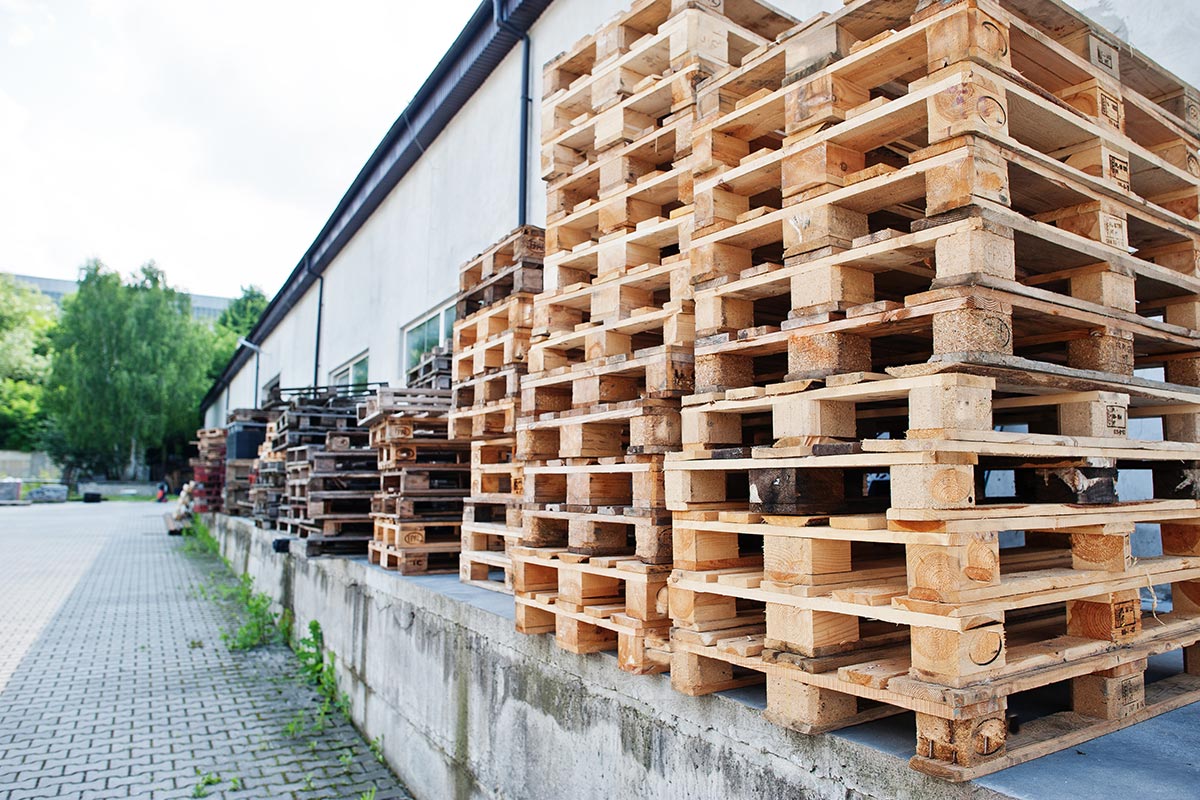Pallets are very common structures that make handling large shipments more manageable when it comes to logistics. The way pallets are built allows them to carry large amounts of weight with product stacked in a vertical fashion. This way of packing and shipping cargo is called palletizing.
Pallets and Palletizing
Palletizing has proven to be an extremely reliable, safe and economically sound way to ship products across the globe. They are so influential that vehicles that are used for shipping, such as tractor trailers and water bound ships, have been built specifically to carry palletized shipments. Not only have the vehicles been purposefully adapted, the loading and unloading process are designed to facilitate pallet shipments.
Pallets for Shipping
Shipping pallets are subject to various international standards by the ISO (International Standardization Organization) in order to ensure their quality and ability to endure trips that cross oceans. Having these standards helps to streamline the shipping process, because it allows every country to be ready to receive as well as send shipments.
The regulations have to do with the size and structure of the pallet and they include:
- American Standard size is 48 inches (breadth) x 40 inches (length)
- European Standard size is 40 inches (breadth) x 47 inches (length)
- Australian Standard size is 42 inches (breadth) x 42 inches (length)
Standards aside from pallet size, deal with areas like the materials that are used to construct the pallets. Ensuring that high quality materials are used, minimizes the chance of experiencing a compromised shipment. If a shipment is compromised, the relationship between the shipper and the client receiving the shipment can become strained, as trust will be inevitably lowered.
- Wood is the most common material used to construct pallets, but there are exceptions.
- Wood needs to be up to regulations in order to be approved for use in constructing pallets.
- Wood needs to be of the softer variety as well as have a low propensity for attracting and carrying contagions.
- Wood pallets need to be disinfected as well as coated with varnish to repel contagions
- Alternative pallet materials include plastic, paper, and steel
Methodology Standards
- Products must be stacked and spread out evenly to ensure weight balance as well as insure ease of loading and unloading.
- Each pallet involved in a shipment needs to be tagged for easy ID.
- Once a shipment is fully prepared it needs to be wrapped in wrapping material to ensure stability and sturdiness.
While on the surface shipping with pallets seems more costly than other methods, its efficiency over time in avoiding failed shipments or compromised product will actually make it more cost effective than other methods. Using pallets will up your efficiency, reputation, and business possibilities. Not only will you save money, you give yourself the opportunity to reach the full potential of your business. If you are wondering if pallets are right for your logistics situation, be sure to look at the big picture.
Get a hold of AAA Pallet & Lumber Co., for all of your pallet needs, we sell new and new pallets, export pallets, and can even recycle your used pallets. Call us at 602-278-1450 for more information.






